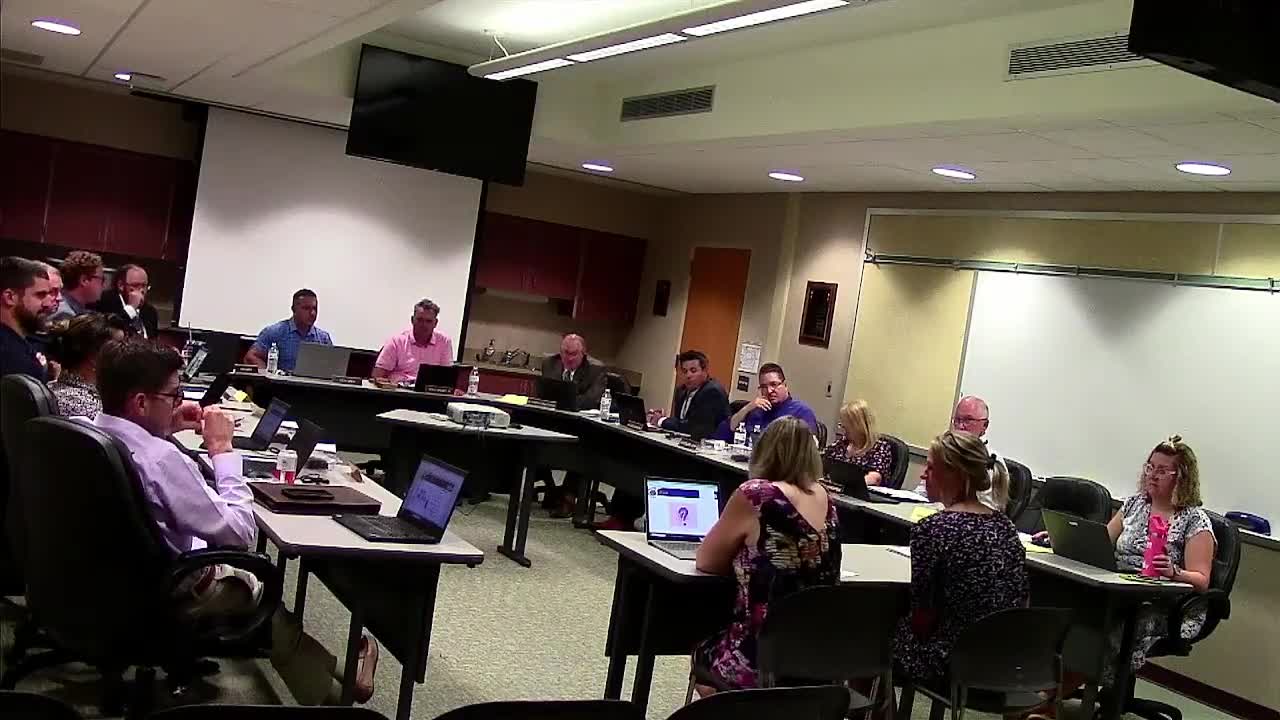School District Implements McGraw Hill Math Pilot to Address Learning Gaps
September 19, 2025 | Eastern York SD, School Districts, Pennsylvania
This article was created by AI summarizing key points discussed. AI makes mistakes, so for full details and context, please refer to the video of the full meeting. Please report any errors so we can fix them. Report an error »

In the heart of the Eastern York School District, a recent school board committee meeting illuminated the ongoing challenges and successes within the district's special education programs. As board members gathered, the atmosphere was charged with a shared commitment to addressing the needs of students while navigating the complexities of funding and resources.
One of the key discussions centered around the increasing demand for special education placements, a concern echoed by districts across Pennsylvania, including Lancaster County. The urgency of the situation was palpable as board members acknowledged that every district is grappling with similar struggles. The conversation highlighted the rising costs associated with special education, particularly in light of new identifications and tuition increases for placements. Despite these challenges, the state remains aware but has yet to provide concrete solutions.
Amidst these hurdles, the district has made strides in enhancing its educational offerings. The introduction of the McGraw Hill math pilot program in life skills classrooms aims to close learning gaps for students with diverse needs. Feedback from special education teachers indicates that a personalized learning approach is fostering a more inclusive environment, allowing students to engage with material at their own levels. This tailored strategy has reportedly made learning more accessible and comfortable for many students.
The board also discussed the potential for expanding special education programs within the district. Currently, the only new program under consideration is middle school autistic support, which would eventually transition students into high school. This expansion could position the district as a regional magnet for special needs education, attracting students from neighboring areas on a contractual basis.
As the meeting progressed, board members reflected on the positive impact of recent initiatives. The establishment of structured programs has allowed the district to accommodate new students more effectively, reducing the need for costly external placements. While the financial implications of these changes are difficult to quantify, there is a growing sense of optimism about the potential savings and improved educational outcomes.
In closing, the committee recognized the importance of transparency regarding the financial aspects of special education. A request was made for a comprehensive overview of costs and savings, emphasizing the need for the board and community to understand the fiscal health of the district's special education efforts. As the meeting adjourned, the commitment to supporting every student remained clear, with board members eager to continue their work in fostering an inclusive and effective educational environment.
One of the key discussions centered around the increasing demand for special education placements, a concern echoed by districts across Pennsylvania, including Lancaster County. The urgency of the situation was palpable as board members acknowledged that every district is grappling with similar struggles. The conversation highlighted the rising costs associated with special education, particularly in light of new identifications and tuition increases for placements. Despite these challenges, the state remains aware but has yet to provide concrete solutions.
Amidst these hurdles, the district has made strides in enhancing its educational offerings. The introduction of the McGraw Hill math pilot program in life skills classrooms aims to close learning gaps for students with diverse needs. Feedback from special education teachers indicates that a personalized learning approach is fostering a more inclusive environment, allowing students to engage with material at their own levels. This tailored strategy has reportedly made learning more accessible and comfortable for many students.
The board also discussed the potential for expanding special education programs within the district. Currently, the only new program under consideration is middle school autistic support, which would eventually transition students into high school. This expansion could position the district as a regional magnet for special needs education, attracting students from neighboring areas on a contractual basis.
As the meeting progressed, board members reflected on the positive impact of recent initiatives. The establishment of structured programs has allowed the district to accommodate new students more effectively, reducing the need for costly external placements. While the financial implications of these changes are difficult to quantify, there is a growing sense of optimism about the potential savings and improved educational outcomes.
In closing, the committee recognized the importance of transparency regarding the financial aspects of special education. A request was made for a comprehensive overview of costs and savings, emphasizing the need for the board and community to understand the fiscal health of the district's special education efforts. As the meeting adjourned, the commitment to supporting every student remained clear, with board members eager to continue their work in fostering an inclusive and effective educational environment.
View full meeting
This article is based on a recent meeting—watch the full video and explore the complete transcript for deeper insights into the discussion.
View full meeting